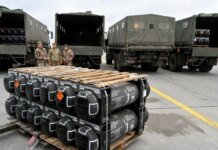AI factory is revolutionizing the way organizations harness data, streamlining the AI development lifecycle from concept to deployment. By creating a structured environment for data collection, processing, and analytics, businesses can unlock the potential of artificial intelligence to drive insights and innovation. This article delves into the various components of an AI factory, its benefits, industry use cases, and deployment environments, providing a comprehensive understanding of its role in today’s digital landscape.
What is an AI factory?
An AI factory functions as an advanced ecosystem designed to maximize the application of data throughout the AI lifecycle. It encompasses various processes, including data ingestion, model training, and high-throughput inference, ultimately transforming raw data into actionable intelligence. The integration of various technologies and components allows organizations to operate efficiently while optimizing their AI initiatives.
Key components of an AI factory
Understanding the key components that make up an AI factory is crucial to appreciating its functionality and advantages. Each element plays a significant role in ensuring smooth operations and optimal performance.
Data pipelines
Data pipelines are essential for converting raw data into structured formats. They facilitate the extraction, transformation, and loading (ETL) of data, which is critical for developing large language models (LLMs). Efficient data pipelines ensure that high-quality data feeds into AI models, enabling them to learn effectively and make accurate predictions.
AI inference
AI inference is the iterative process through which trained models generate predictions based on new data inputs. This component is vital for applications such as fraud detection and real-time recommendations, where timely and precise responses are essential for operational success. By optimizing inference performance, an AI factory can deliver faster insights to drive decision-making.
Digital twins
Digital twins play a crucial role in the AI factory by creating virtual replicas of physical systems or processes. These models enable simulation and optimization, allowing organizations to run experiments in a risk-free environment. Benefits include real-time collaboration, scenario analysis, and the ability to prepare for potential failures.
Full-stack AI infrastructure
A full-stack AI infrastructure combines the necessary hardware and software to support robust AI operations. This comprehensive setup is essential for achieving scalability and ensuring that systems receive continuous updates and improvements. The right infrastructure empowers organizations to handle diverse AI workloads efficiently.
Automation tools
Automation tools within an AI factory streamline many manual tasks throughout the AI lifecycle. By automating processes like data cleaning, model training, and scheduling, organizations can enhance efficiency, increase throughput, and maintain consistency in their AI operations, ultimately saving time and resources.
Benefits of an AI factory
Embracing an AI factory model offers several advantages that can significantly impact business growth and operational efficiency.
- Transforming data into revenue: AI factories convert raw data into strategic insights that drive business growth.
- Optimizing the AI lifecycle: They enhance efficiency across all phases of AI development, from inception to deployment.
- Boosting performance: The combination of accelerated computing and improved energy efficiency is essential for handling demanding AI workloads.
- Efficient scaling: AI factories are designed to easily scale to meet the varying needs of enterprises.
- Secure ecosystems: Ensuring a secure environment is vital as the AI landscape evolves and becomes more complex.
Industry use cases
AI factories can be applied across various sectors, showcasing their versatility and potential impact.
National infrastructure
In the realm of national infrastructure, AI factories improve governmental initiatives, enabling smarter urban planning and resource allocation. By leveraging data analytics, governments can enhance public services and economic outcomes.
Advanced robotics & autonomous vehicles
AI factories are instrumental in enhancing real-time decision-making capabilities in robotics and autonomous vehicles. These technologies rely on quick processing of vast amounts of data to operate safely and effectively.
Healthcare
In healthcare, AI factories facilitate drug discovery and personalized medicine by analyzing extensive datasets. This capability allows for more effective treatments and improved patient outcomes.
Telecommunications
Telecommunications companies, like Telenor, have adopted AI factories for enhancing network efficiency and sustainability. This approach optimizes network management and improves service delivery for customers.
Financial services
Within financial services, AI factories integrate AI components to enable functionalities such as fraud detection and automated trading systems. The ability to process and analyze data in real time is indispensable in this competitive industry.
Deployment environments
Organizations can choose from various deployment environments for their AI factories, tailored to their specific needs.
On-premises
On-premises solutions provide organizations with complete control over their AI infrastructure, ensuring high-security performance and compliance with data regulations.
Cloud
Cloud deployment offers scalability and flexibility, allowing organizations to access AI capabilities as needed without the overhead of maintaining physical infrastructure. This model is particularly advantageous for businesses looking to innovate rapidly.
Hybrid
Hybrid models strike a balance between security and cost-effectiveness, combining on-premises and cloud solutions. This approach allows organizations to leverage the benefits of both environments according to their operational requirements.
Getting started with an AI factory
Establishing an AI factory is supported by various resources and technologies provided by NVIDIA, which includes:
- NVIDIA Enterprise AI Factory Validated Design: A blueprint for building robust AI factories.
- High-performance GPUs: Essential for accelerating training and inference processes.
- NVIDIA NVLink: Enables seamless communication between GPU resources for enhanced performance.
- Quantum InfiniBand & Spectrum-X Ethernet: Facilitates high-speed data transfer critical for AI operations.
- Full-stack AI inference platform: Provides comprehensive tools for deploying AI applications effectively.
- Omniverse Blueprint: A framework that supports collaborative simulations and model development.
This extensive overview of AI factories outlines their purpose, components, applications, benefits, and deployment strategies, offering invaluable insights for organizations aiming to leverage AI technologies to enhance operational efficiency.





























